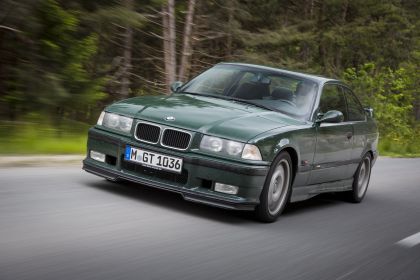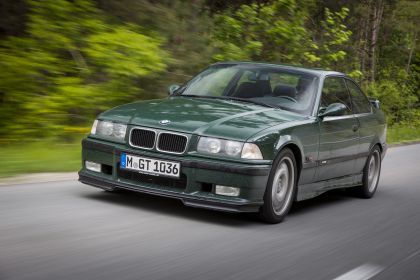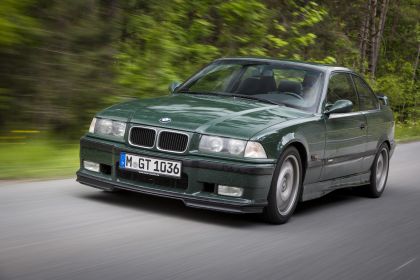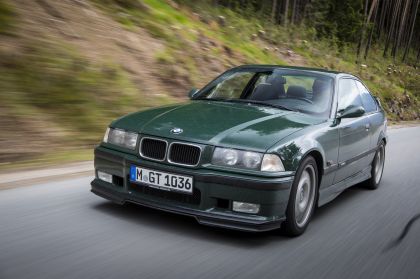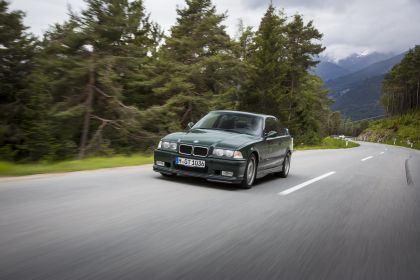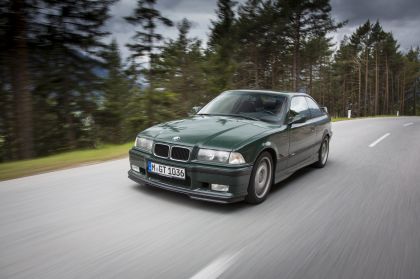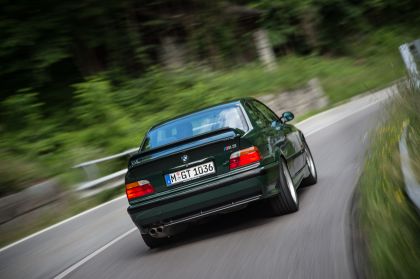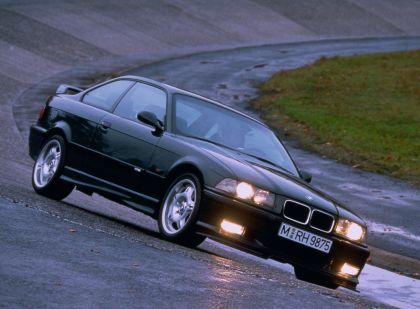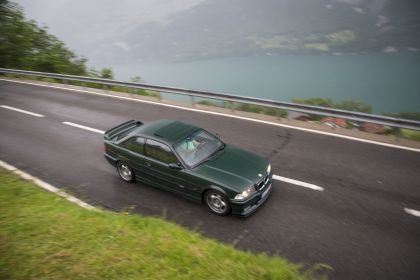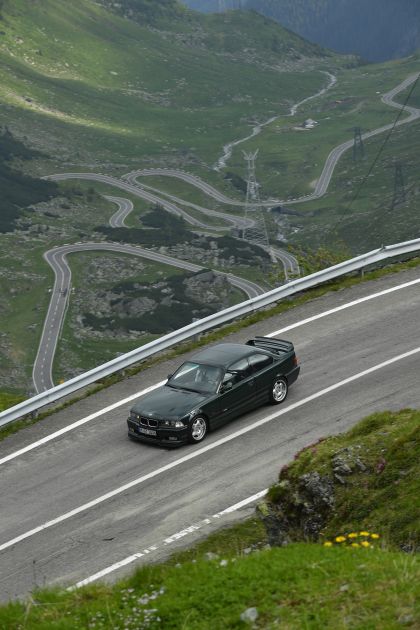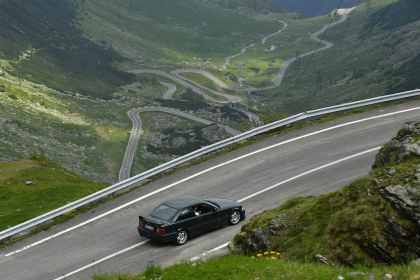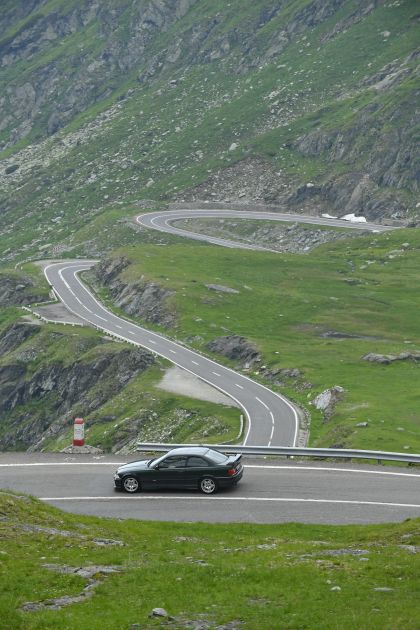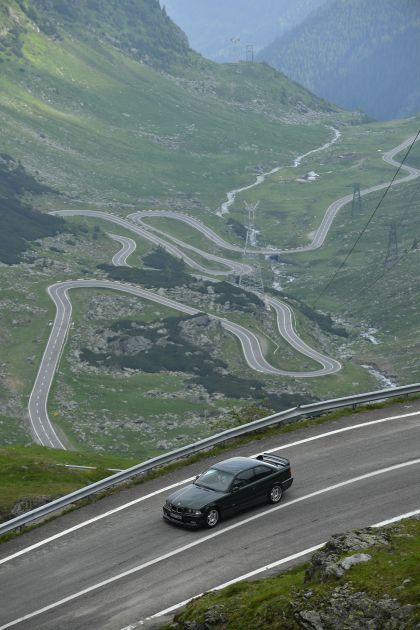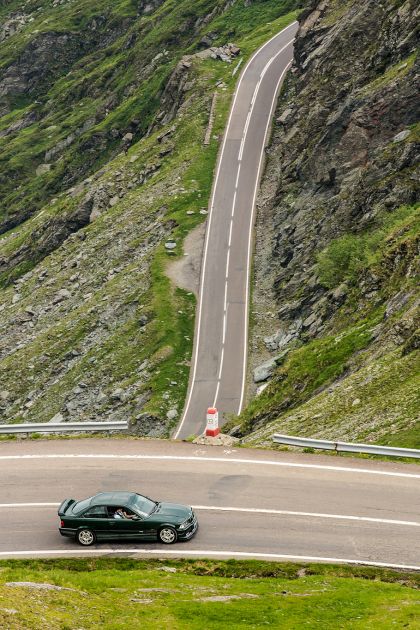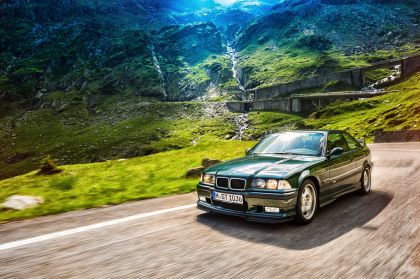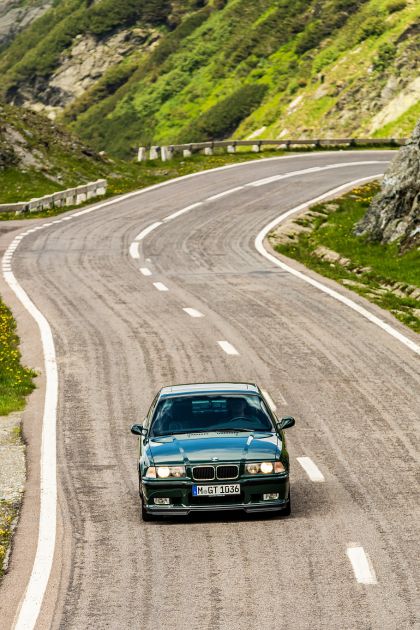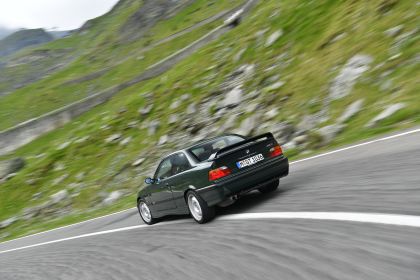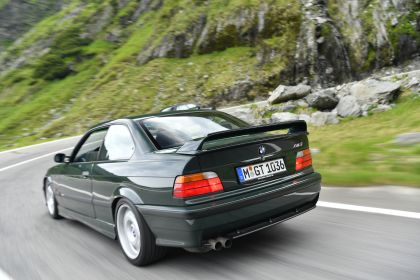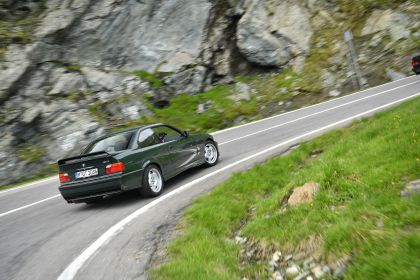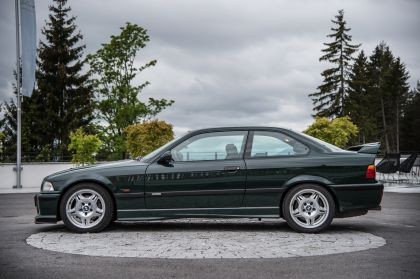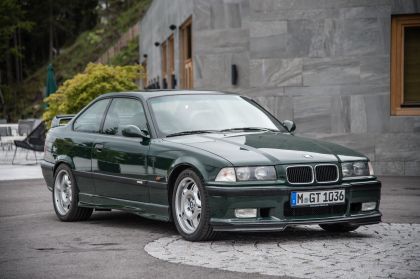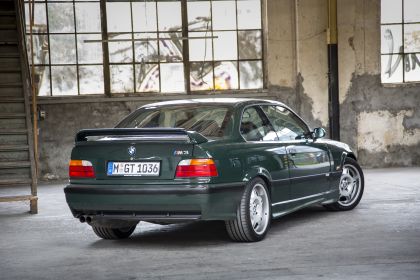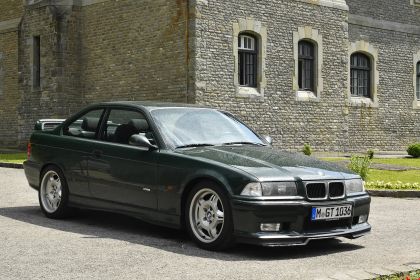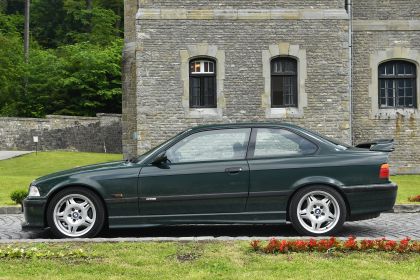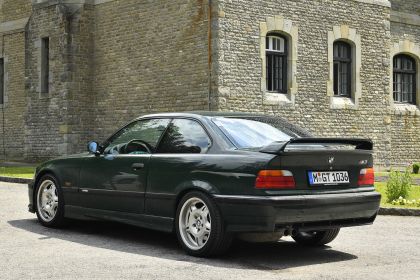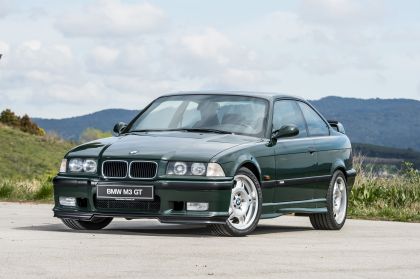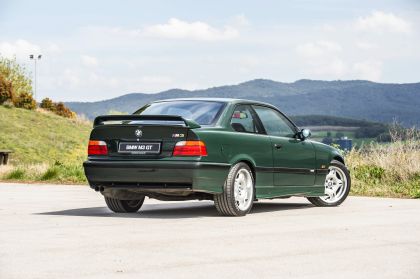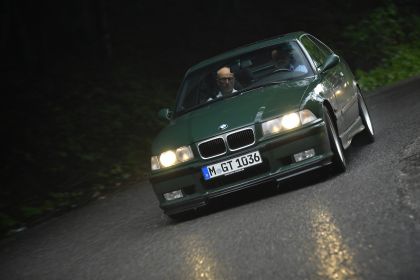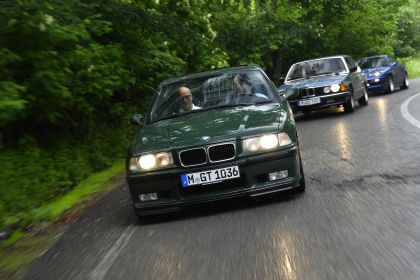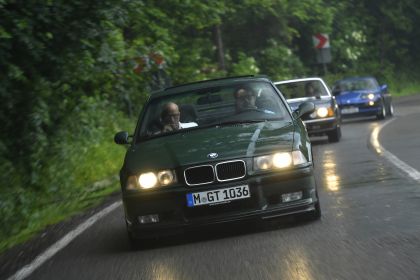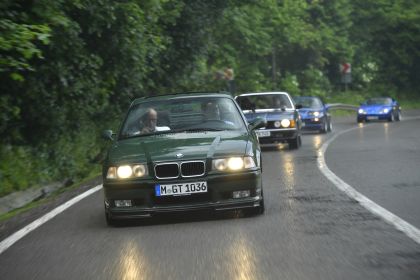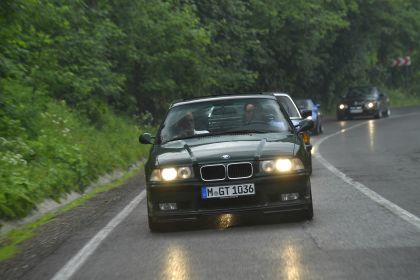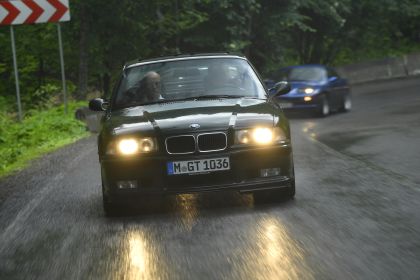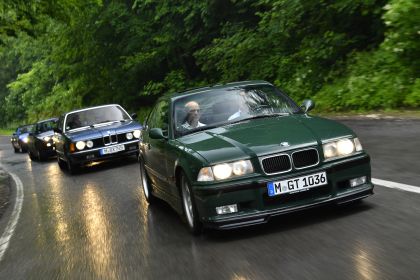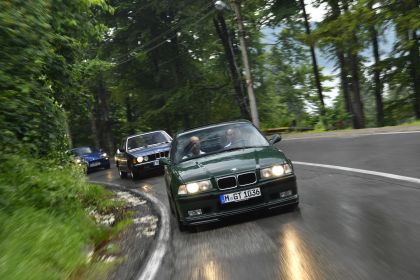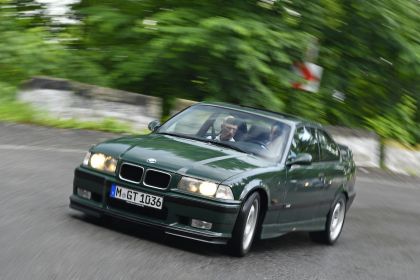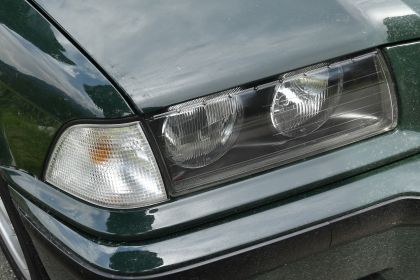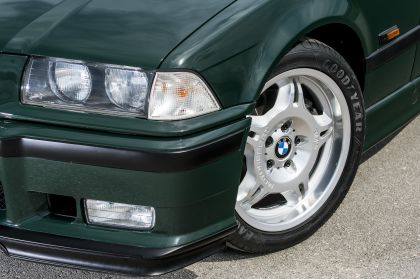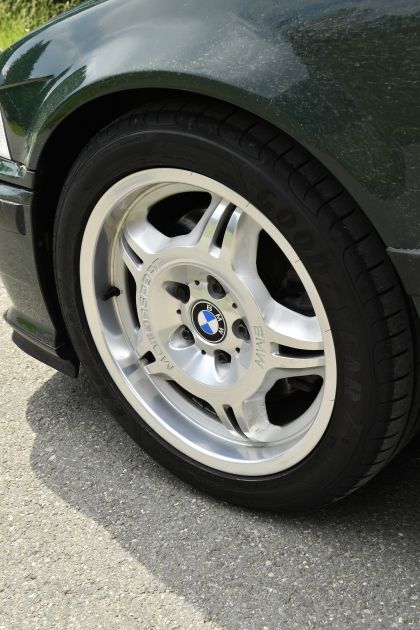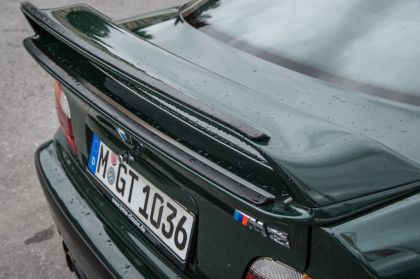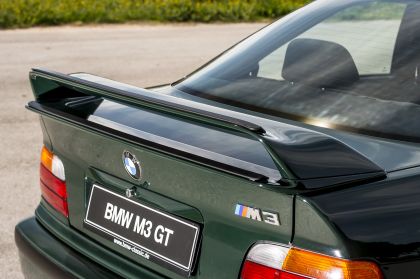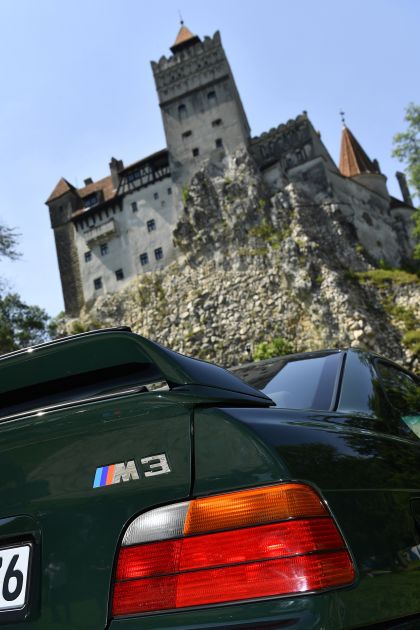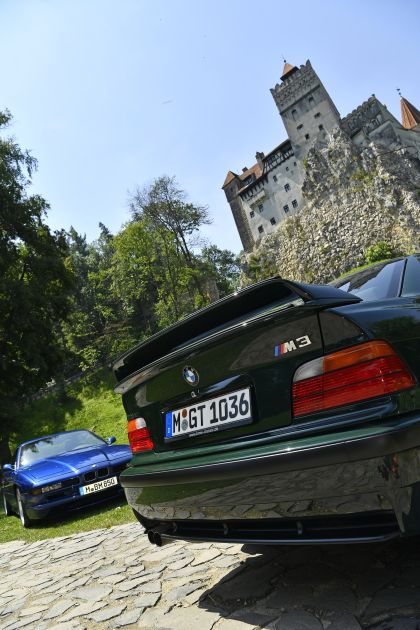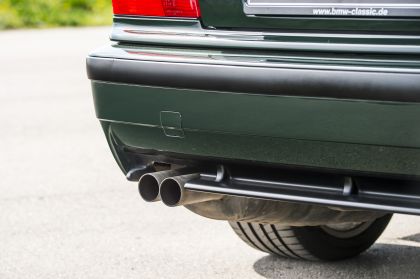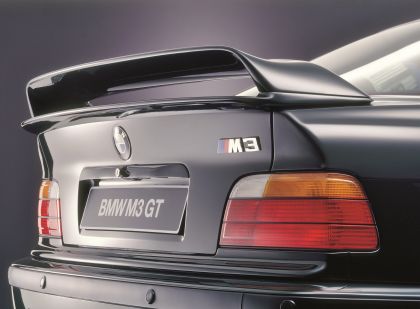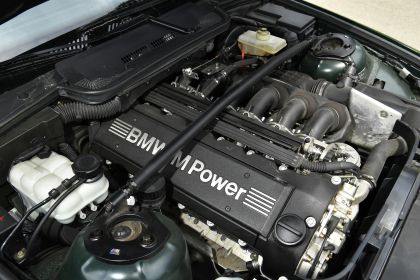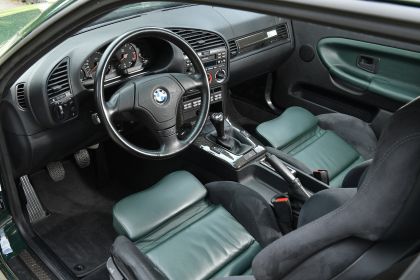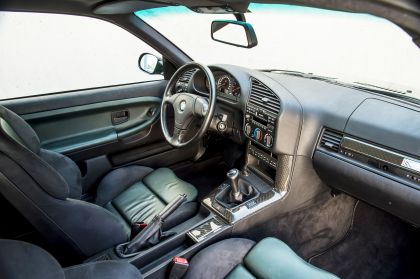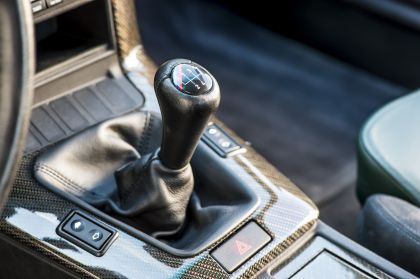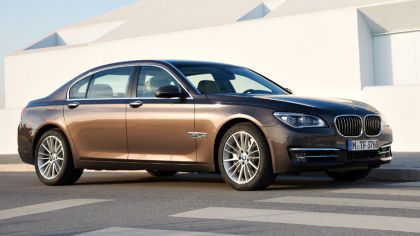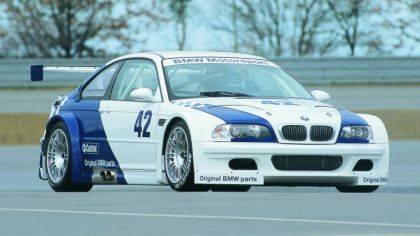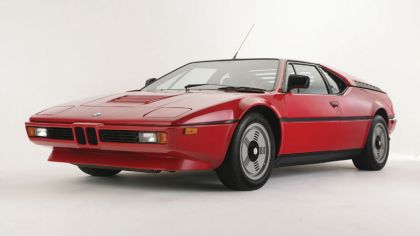Second generation BMW M3 was a completely new car - and a completely different car. This was the end of an era for an uncompromising sports car that was consistently tailored to be competitive in racing and demanded bold qualities from its drivers. An elegant and sophisticated coupé now emerged on the roads with a powerful yet cultured six-cylinder engine. The four-valve engine delivered 210 kW or 286 hp, thanks to the VANOS variable valve timing. This innovation allowed the opening point of the inlet valves to be adjusted to the engine speed and load. The advantage was that torque, power and consumption could be optimised simultaneously. The new M3 engine was a pioneer among naturally aspirated engines generating 320 newton metres at 3600 revolutions. The six-cylinder generated as much power as the previous M3 engine with a peak value of 230 newton metres virtually from idling speed. This made the M3 a world champion. No other naturally aspirated engine had such a high specific output - 97 hp for each litre of displacement - or such a high specific torque - 108 newton metres per litre of displacement. The coupé took 6.0 seconds to sprint from a standing start to a speed of 100 km/h, and the acceleration only stopped at a speed of 250 km/h. This was not because the engine had run out of power but because the electronics brought the acceleration to an end - BMW had set this voluntary limit.
Meanwhile, the DIN consumption values were at a level that would also have looked good on paper for a mid-range car: the BMW M3 used 9.1 litres of super in the Euromix formula. Lead-free was standard because naturally the super sports car had a catalytic converter. The engineers had revised the catalytic converter technology specifically to meet the needs of the new engine and developed the "stereo" oxygen sensors. This allowed the mixture for groups of three cylinders to be regulated separately with an oxygen sensor through separate exhaust systems. It enabled the vehicle to comply with the specified exhaust limits, in fact undercutting them by more than half.
